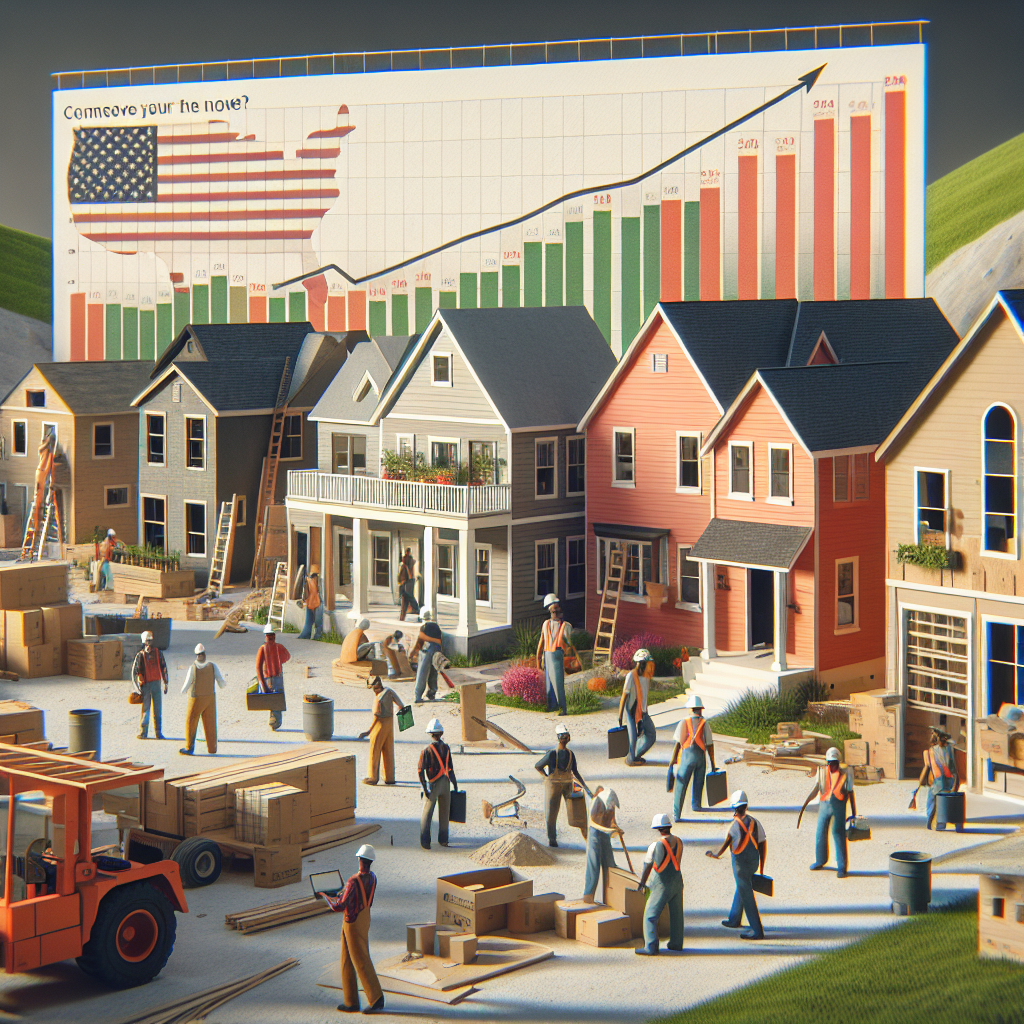【Epoch Times January 18, 2025】(Epoch Times reporter Qiu Sheng reporting)
Last December, the single-family housing start rate in the United States rose to a 10-month high, indicating a recovery in construction activity at the end of last year. However, the increase in mortgage rates and the surplus of new homes in the market may limit the recovery.
A report released by the US Department of Commerce on Friday, January 17, also showed that last month, the number of permits for future single-family home construction rose to the highest level since February of last year. It is well known that housing starts and permit data fluctuate greatly, but this data still provides evidence of a strong performance in December, indicating that the economy maintained strong momentum in the fourth quarter.
The US Census Bureau of the Department of Commerce stated that the single-family housing start, which accounts for the majority of total housing construction, increased by 3.3% last month, reaching 1.05 million sets after seasonal adjustment, the highest level since February 2024.
Single-family housing construction surged by 14.3% in the Northeast region of the United States, 8.3% in the Midwest, and 7.1% in the West, while remaining unchanged in the densely populated Southern region. In December last year, single-family housing starts decreased by 2.6% annually.
Multi-family housing starts increased dramatically by 58.9%, reaching 418,000 sets. The overall housing start number jumped by 15.8%, reaching 1.499 million sets, the highest level since February of last year.
The rising mortgage rates have put pressure on housing construction, as previous housing construction has benefited from a shortage of existing homes for sale. Mortgage rates have risen in sync with US Treasury yields.
The Federal Reserve has reduced its expected number of interest rate cuts for this year from the initial plan of 4 cuts since the start of the easing cycle in September of last year to 2 cuts. The Fed has already reduced the benchmark overnight rate by 100 basis points to a range of 4.25% to 4.50%. The central bank’s policy rate increased by 5.25 percentage points in 2022 and 2023.
Freddie Mac, the mortgage financier, announced on Thursday that the average rate for 30-year fixed-rate mortgage loans this week has risen above 7% for the first time since May of last year.
Home builders were elated by Donald Trump’s victory in the election on November 5, as regulatory environments were expected to ease. However, the National Association of Home Builders/Wells Fargo Housing Market Index remained unchanged in January after rising for two consecutive months, with builders complaining of high borrowing and construction costs leading to weak demand. This has resulted in an oversupply of unsold new homes, with inventory levels reaching late 2007 levels.
In December last year, permits for future single-family housing construction increased by 1.6% to 992,000 sets.
Samuel Tombs, Chief US Economist at Pantheon Macroeconomics, stated, “The increase in unsold new home inventory on builders’ books suggests that even if mortgage rates ultimately fall and demand eventually picks up, the boost to construction activity will be very weak.”
The number of permits for single-family homes increased in the Northeast and Southern regions of the United States, but decreased in the West and Midwest regions.
Multi-family housing construction permits decreased by 5.8% to 437,000 sets. The total number of building permits fell by 0.7% to 1.483 million sets. This represents a decrease of 3.1% year-on-year. Last year, the number of building permits was around 1.471 million, a 2.6% decrease from 2023.
Residential investment has dragged GDP growth for two consecutive quarters. The Atlanta Fed forecasts the annualized GDP growth rate for the fourth quarter of last year to be 3.0%. Economic growth in the third quarter was 3.1%.
(This article referenced reports from Reuters)

